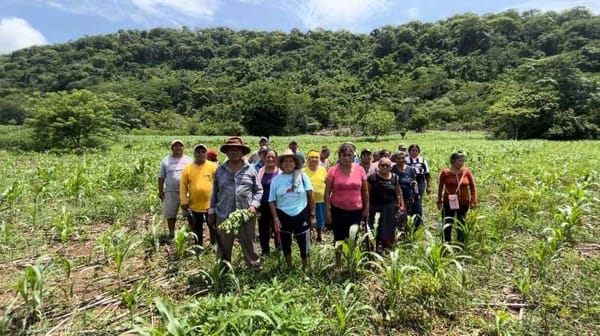The Role of Storehouses During Grain Shortages and Revolts in New Spain
Discover how storehouses (las alhóndigas) were implemented in New Spain to combat food shortages caused by natural and human disasters, and the impact of grain scarcity on the population.

In New Spain, natural disasters and other crises could severely impact the production and supply of essential foods like corn. To counteract these situations, storehouses known as "alhóndigas" were implemented. In this article, we will explore how these establishments operated and the records left by the people affected by corn shortages.
The concept of storehouses dates back to the Middle Ages in countries such as Spain. Their primary purpose was to act as warehouses for cereals and other products, providing reserves during drought seasons. These mercantile spaces had economic and legal powers, allowing them to regulate and oversee the sale of grains. They could set prices, establish weight measures, and, in certain cases, even confiscate grains from producers.
In New Spain, the first storehouse was established between 1573 and 1583 in Mexico City. It was primarily used to store corn, which was crucial to the population's survival. While these storehouses were essential during difficult times, severe corn shortages still caused famines and even riots. On June 8, 1692, for example, a group of people rioted due to a lack of food caused by weather and a chahuistle plague the previous year.
In 1809, another corn shortage occurred, lasting until 1810. To counteract the situation, various towns in New Spain implemented measures, such as limiting the sale of corn and mixing the little corn they had with wheat. Officials even visited the corn stores of all the haciendas to prevent producers from hoarding corn for resale. Despite these efforts, the corn granaries were empty, and neighboring haciendas refused to sell their corn to the storehouse in Querétaro, despite Miguel Domínguez's proposal to cover transportation costs.
As the corn shortage worsened, more people arrived at storehouses to buy food, depleting reserves at other supply points. In Mexico City and other towns, general unease arose among the population due to a lack of supplies at points of sale. To calm the situation, Viceroy Francisco Javier de Lizana ordered the adoption of measures established by the former Viceroy Bernardo de Gálvez during the corn crisis of 1785.
However, these measures were not enough to prevent riots. In November 1809, a large group of people almost took over the storehouse due to the lack of food. Officials managed to calm the situation by promising to sell corn to everyone until late at night. While the government managed to handle the crisis, the effects of the 1809 corn shortage remained in the minds of the inhabitants, especially the indigenous communities that were forced to change their economy of self-consumption. These negative consequences fueled general discontent, eventually leading to the armed uprising led by Miguel Hidalgo y Costilla.
Las alhóndigas
Alhóndigas were large buildings or complexes that were used in colonial New Spain (present-day Mexico) as marketplaces and warehouses for grain, particularly maize. The word "alhóndiga" comes from the Arabic word "alhandaqa", which means "granary" or "storehouse".
In colonial times, the alhóndigas were important centers of commerce and distribution of maize, which was a staple crop in Mesoamerican societies. The alhóndigas were managed by Spanish authorities and were used to store and sell maize from the indigenous communities to Spanish settlers and other customers.
In addition to their commercial function, the alhóndigas were also important social spaces where people gathered to exchange news, gossip, and ideas. They were also used for public events and meetings and served as places where the authorities could address the local population.
Today, some of the historic alhóndigas in Mexico have been preserved and repurposed as cultural centers or museums, providing a glimpse into the social and economic life of colonial New Spain.
Chahuistle plague
The chahuistle plague was a devastating disease that affected maize crops in Mexico during the colonial period. The term "chahuistle" comes from the Nahuatl word "chahuiztli", which means "drought".
The chahuistle plague was caused by a fungus called Ustilago maydis, which infects the maize plant and destroys the kernels, leaving them covered in a black, powdery substance. The disease was first recorded in 1736 and spread rapidly, causing widespread famine and social upheaval in central Mexico.
The impact of the chahuistle plague was particularly severe on the indigenous population, who relied heavily on maize as a staple crop. The disease caused widespread crop failure, food shortages, and social unrest, and is believed to have contributed to the decline of indigenous communities in the region.
Despite its devastating impact, the chahuistle plague also had some positive effects on agriculture in Mexico. The disease prompted farmers to experiment with new crop varieties and farming practices, leading to the development of more resilient maize strains that were better able to withstand disease and drought.
Full Citation: Nación, Archivo General de la. “Las Alhóndigas En La Nueva España Durante La Escasez De Maíz.” gob.mx, 21 Feb. 2023, www.gob.mx/agn/es/articulos/las-alhondigas-en-la-nueva-espana-durante-la-escasez-de-maiz?idiom=es.




